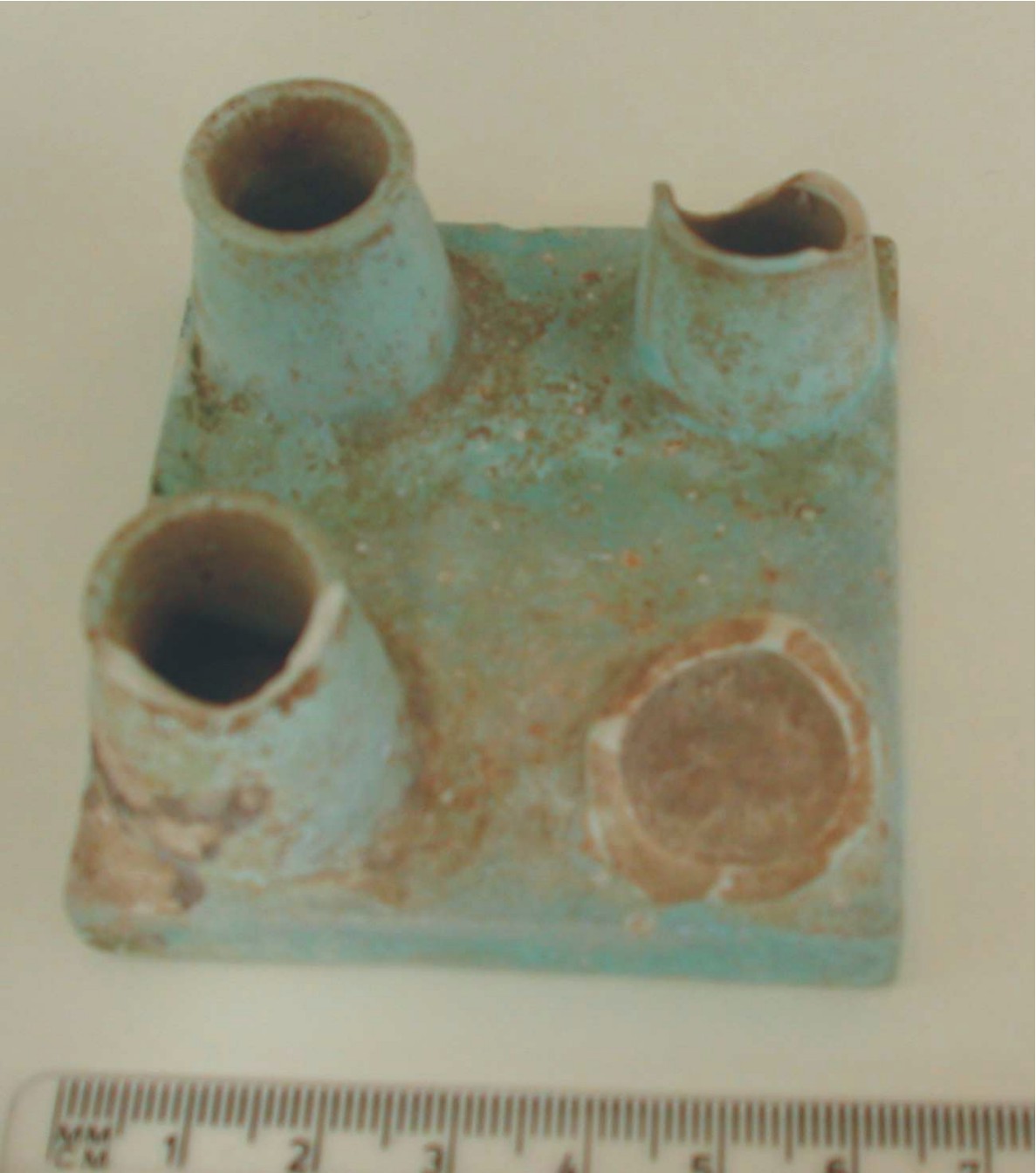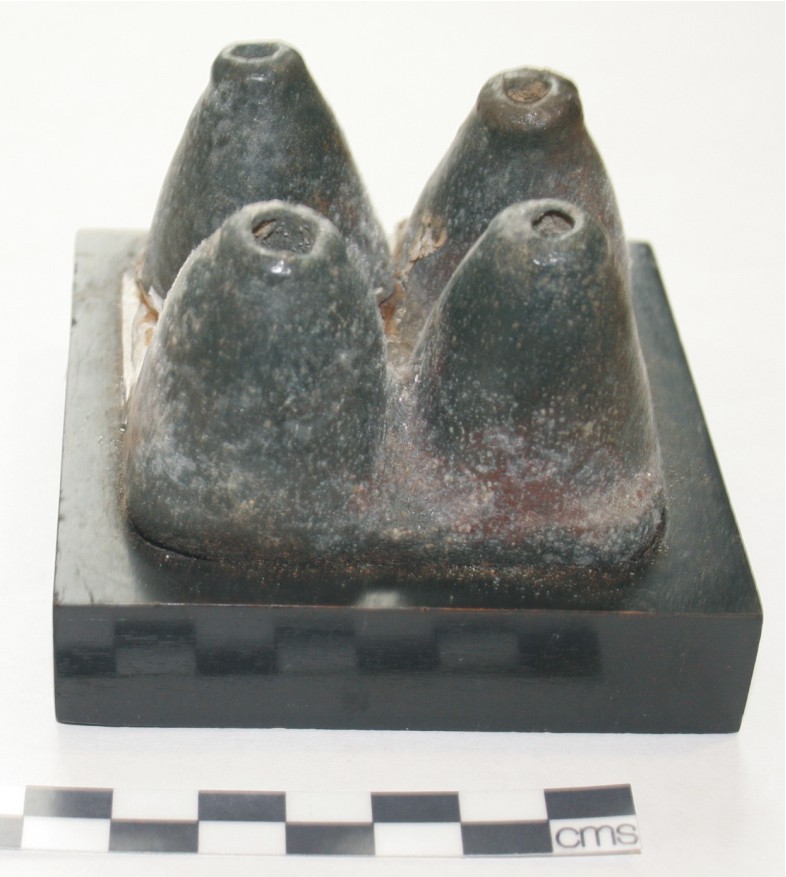EC726 and EC727
EC726 and EC727 Model faience vessels


The artefact on the left is EC726, and that on the right is EC727. Both are faince tablets with four model vessels theron, probably associated with the Opening of the Mouth Ceremony.
Faience tablet with four containers thereon. Such items have for long proved mysterious and have been interpreted variously as model cereal bins or inkwells, or even cosmetic containers. However, it seems most likely that they were used in cultic ritual, probably including the Opening of the Mouth Ceremony.
Items like this date to the Late Dynastic Period and are found in both temples and tombs. Grallert (in press) identified over 90 such sets. Vessels may be categorised as being like nemset or desheret types, though ours are more clearly like Grallert’s granary type (Grallert fig. 3).
Grallert discusses the finding of a few examples from elite tombs of the Theban area or further south ranging from the 26th to 30th Dynasties. Two were found in a box with other ritual objects which were clearly ritual in the tomb of Tjaenhebu dating to the 26th Dynasty (Grallert; Strudwick 2009, 228, fig. 9).
Strudwick notes that several of the other items found in the same box (for example four rectangular blocks of alabaster) are clearly associated with the Opening of the Mouth Ceremony. Both he and Grallert further identify the four vessels with the four vessels placed on mats illustrating Opening of the Mouth scenes on tomb walls and with the list of items used in the Opening of the Mouth ritual which appears in the tomb of Merymery.
These items are also, however, also found in temple contexts. For similar items from temples see Green (1987, 64–65). One might ask why they were used there. That similar vessels were also used in temple ritual in the morning purification and awakening of the god is clear from various descriptions of temple ritual (Gardiner 1935; Hays 2009; Cauville 2012, 28). The jars contained water for purification (Hays 2009, 5; Cauville 2012, 28). It is clear that these rituals included the same elements and intentions as the Opening of the Mouth Ritual performed on mummies, namely to animate the god.
Of course, clearly these are model vessels and it would have been impossible to pour liquid from them. Thus, it seems they were intended to perpetuate the Opening of the Mouth ritual for all eternity.
The items may now be better understood, but still retain some mystery. Why, for example, are they suddenly introduced in the 26th Dynasty? As Grallert states, other new items seem to have been introduced into the Opening of the Mouth Ceremony at this time, items which are not depicted in mural texts or which appear in earlier burials. It could be that this was part of a larger archaizing tendency.
This item was purchased at Fosters auction on 19th February 1931 (lot 176). We have another similar item (EC726).
Further Reading:
Cauville, S. 2012. Offerings to the Gods in Egyptian Temples. Leuven: Peeters.
Gardiner, A.H. 1935. Hieratic Papyri in the British Museum. London: British Museum.
Grallert, S. Integrated Sets of Model Vessels in Late Period Burials from Lower Egypt – A Preliminary Report, in Kousoulis, P. and Lazaridis, N. (eds.), Proceedings of the Xth International Congress of Egyptologists, Rhodes 20–28 May 2008, Leuven: Peeters (in press).
Green, C. 1987. The Temple Furniture from the Sacred Animal Necropolis at Saqqara. 1964–1976. London: Egypt Exploration Society.
Hays, H.M. 2009. The Ritual Scenes in the Chapels of Amun, in The Epigraphic Survey, Medinet Habu Vol 9. The Eighteenth Dynasty Temple Part I. The inner sanctuaries. Chigago: The Oriental Institute of the University of Chicago, 1–14.
Strudwick, N. 2009. True ‘ritual objects’ in Egyptian private tombs? In Backes, B, Müller-Roth, M, and Stöhr, S. eds. Ausgestattet mit den Schriften des Thot. Festschrift für Irmtraut Munro zu ihrem 65. Geburtstag. Wisbaden: Harrassowitz Verlag, 213–238.